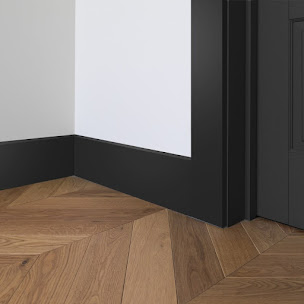10 Best Deck Tile Ideas
If you want to give your deck a complete makeover with fresh flooring materials, a pool, or just a summer decor refresh, there are many things you may do. You should use Decking Tiles.
Patterned Tile:
In recent years, bold tile has emerged as a major design trend, and we support it. Patios with irregular tile, like this one made of porcelain tile, make a strong impression in an outdoor area. Just keep in mind to keep your patio furniture tidy and straightforward when utilizing tile with a chaotic design.
Quarry Tile:
Contrary to its name, quarry tile isn't actually extracted from natural quarries; rather, it is a hybrid artificial stone created by combining a very dense form of unglazed clay with crushed natural minerals and then firing the mixture to produce a hard product, similar to how traditional bricks are made. These tiles work great as patio pavement because they are incredibly durable.
Stone Tile:
Creating a floor outdoors using stone deck tiles can be as simple as snapping Lego pieces together. A level, clean surface can be used to install various natural stone tiles that are installed on plastic interlocking bases without the need for glue or grout.
Wood Tile:
Both decking and parquet tiles can be made of wood and used outside. Patio floors made of naturally gorgeous wood will keep things simple. With Wooden Decking Tiles, your patio may be transformed into a cozy outdoor retreat.
Slate Tile:
Natural slate tile is an option if you want a patio with exceptional strength and durability. Slate is a sturdy, solid, and non-porous material that withstands the weather well. Also, you won't have to give up style. Grays, blacks, and browns are among the available colors, as are more unusual hues like purple and green.
Ceramic Tile:
Ceramic tile, however, is typically best suited for patios with minimal traffic because it is less durable than other options. If ceramic tile is what you decide on, make sure that it's a floor tile strong enough to be used on a patio. Ceramic tiles that are advertised as wall tiles are never strong enough to be used on a floor or patio.
Porcelain Tile:
In a furnace, clay and other organic elements are combined and burned to create porcelain tile. It contains less moisture and is not as likely to crack as a result of freezing. Typically, porcelain is left unglazed.
Saltillo Tile:
Rough-edged terracotta tiles are known as saltillo tiles. Its name is derived from Saltillo, Mexico, where authentic Saltillo tiles are created by hand. Because they are handmade, they have a tile-like appearance.
Interlocking plastic Tile:
Plastic tiles with interlocking edges are a relatively new type of tile. These tiles have the benefit of being easy for do-it-yourselfers to install and having a texture that can prevent slips and falls.
Granite Tile:
Granite tiles are used, and the result is stunning. A sleek, contemporary appearance is produced by the homogeneous gray tone and few grout lines. Granite is a durable material that resists stains.




Comments
Post a Comment